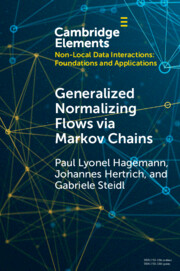Large-scale atmospheric circulation patterns, so-called weather regimes, modulate the occurrence of extreme events such as heatwaves or extreme precipitation. In their role as mediators between long-range teleconnections and local impacts, weather regimes have demonstrated potential in improving long-term climate projections as well as sub-seasonal to seasonal forecasts. However, existing methods for identifying weather regimes are not specifically designed to capture the relevant physical processes responsible for variations in the impact variable in question. This paper introduces a novel probabilistic machine learning method, RMM-VAE, for identifying weather regimes targeted to a local-scale impact variable. Based on a variational autoencoder architecture, the method combines non-linear dimensionality reduction with a prediction task and probabilistic clustering in one coherent architecture. The new method is applied to identify circulation patterns over the Mediterranean region targeted to precipitation over Morocco and compared to three existing approaches: two established linear methods and another machine-learning approach. The RMM-VAE method identifies regimes that are more predictive of the target variable compared to the two linear methods, both in terms of terciles and extremes in precipitation, while also improving the reconstruction of the input space. Further, the regimes identified by the RMM-VAE method are also more robust and persistent compared to the alternative machine learning method. The results demonstrate the potential benefit of the new method for use in various climate applications such as sub-seasonal forecasting, and illustrate the trade-offs involved in targeted clustering.
